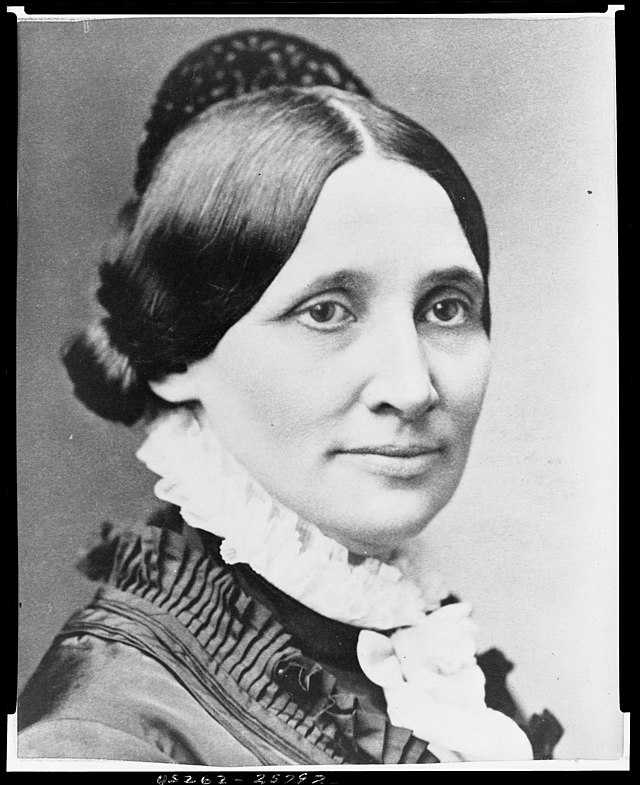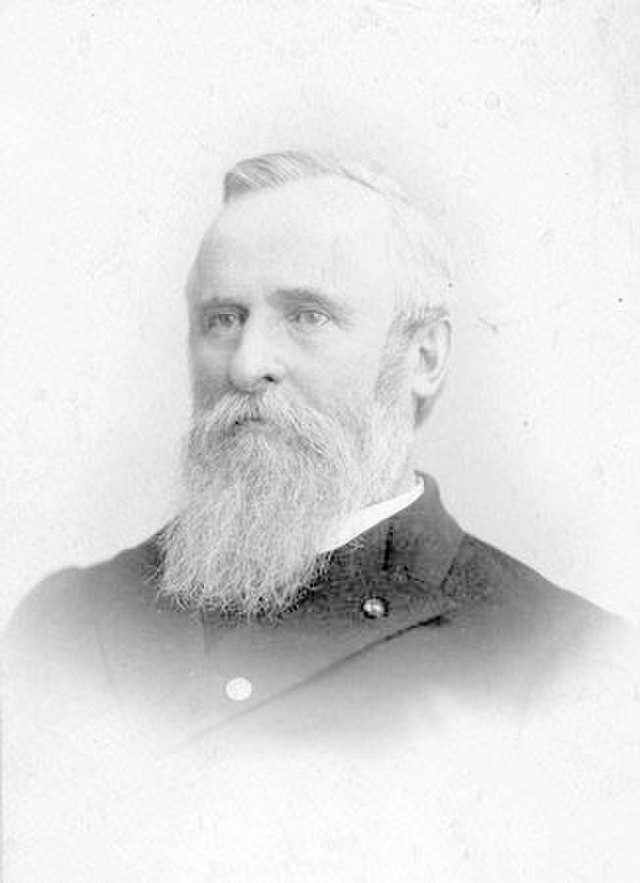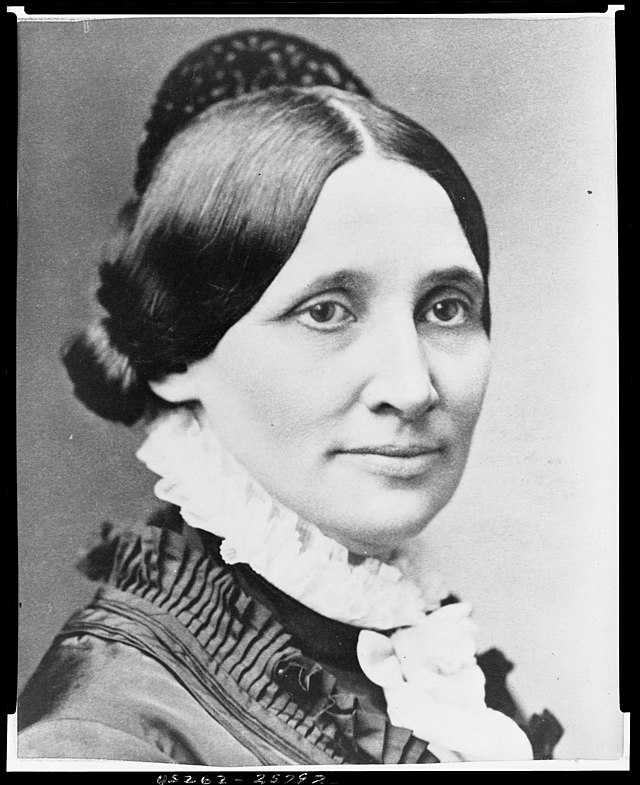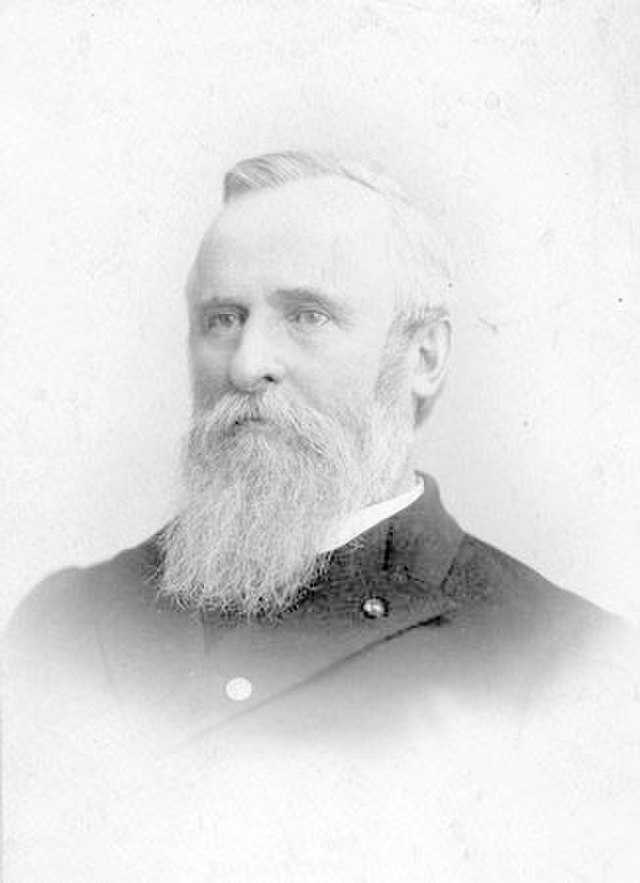Общественная жизнь
Хейс воевал в армии во время Гражданской войны, дослужился до звания генерал-майора и получил тяжелые ранения в битве при Южной горе. Когда Хейс еще служил в армии, республиканцы из Цинциннати убедили его баллотироваться в Палату представителей, и он был легко избран, войдя в Конгресс в декабре 1865 года. Два года спустя он подал в отставку и начал свой первый срок на посту губернатора Огайо, продолжая служить три срока.
В 1876 году республиканцы выдвинули Хейса на пост президента против демократа Сэмюэла Тилдена из Нью-Йорка. Несмотря на то, что такие широко известные фигуры, как Марк Твен, агитировали от его имени, Хейс никогда не думал, что сможет победить, и когда пришло народное голосование, Хейс проиграл с небольшим перевесом в 250 000 голосов. Однако оспариваемые голоса коллегии выборщиков во Флориде, Луизиане и Южной Каролине удерживали кандидата на плаву: если все спорные голоса достанутся Хейсу, он победит; если хотя бы один голос достанется Тилдену, Хейсу конец. В том, что в конечном итоге стало одним из самых противоречивых выборов в американской истории, неопределенность царила в течение нескольких месяцев после выборов, до января 1877 года, когда Конгресс учредил специальную избирательную комиссию, чтобы решить спор раз и навсегда. Комиссия состояла из восьми республиканцев и семи демократов, поэтому неудивительно, что она приняла решение в пользу Хейса 8-7 голосами, передав окончательный подсчет голосов Хейсу 185-184. Результат был спорным, и, чтобы не разжигать пламя негодования, Хейс тайно принес присягу в субботу, 3 марта 1877 года, в Красной комнате Белого дома. (Хейс был первым президентом, который принес присягу в Белом доме; он также был первым президентом, у которого там была пишущая машинка и телефон.)
People
- Abraham Lincoln
- Activity Bundles
- African-Americans in History
- Alexander Hamilton
- Amelia Earhart
- Antagonists
- Artists
- Authors
- Babe Ruth
- Benjamin Franklin
- Biographies
- Civil War — People
- Composers
- Digital Literacy Centers — from Computer Mice — NEW
- Elizabeth Blackwell
- Explorers
- First Ladies
- Galileo
- George Washington
- Harriet Tubman
- Inventors
- Jackie Robinson
- James Madison
- John Adams
- John James Audubon
- Lakota (Sioux Nation)
- Lewis and Clark
- Lunch Ladies
- Martin Luther King, Jr. Day
- Mathematicians
- Michael Jordan
- Ms. Information Games — NEW
- Muhammad Ali
- National Teachers Day
- Native Americans
- Presidents
- Presidents — Activities
- Revolutionary War — People
- Rosa Parks
- Scavenger Hunts
- Susan B. Anthony
- Thomas Jefferson
- Women in History
- Women in History — Activities
A Leader in Meritocracy and Equal Opportunity
Rutherford B. Hayes was a firm believer in meritocracy and equal opportunity for all, regardless of race. He was a strong advocate for education, believing that it was the key to unlocking a brighter future for everyone. He was a proponent of the idea that everyone should have the same chance to succeed, regardless of their background or circumstances. He was also a strong supporter of civil rights, believing that everyone should be treated equally and fairly. Hayes’ commitment to these ideals was unwavering, and he worked hard to ensure that everyone had the same chance to succeed.
Also → 22nd and 24th President of the United States: Stephen Grover Cleveland
Advertisement
Science
- Activity Bundles
- Amazon Rainforest
- Arctic Activities
- Arctic Ecosystems and Wildlife
- Bats
- Bears
- Birds — Activities
- Birds — Birds of Prey
- Birds — Ducks and Water Birds
- Birds — Penguins
- Birds — Songbirds
- Birds — Vultures and Condors
- Butterflies
- Carnivores
- Cats
- Coloring
- Computers and the Internet
- Deserts of the World
- Dinosaur and Pre-Historic Animals
- Endangered Species
- Everglades
- Extinction
- Galileo
- Human Body
- Influenza (the flu)
- Insects
- Inventors
- Komodo Dragons
- Malware and Computer Viruses
- Mammals
- Mammals — Activities
- Mars
- Oceans
- Periodic Table
- Purple Martins
- Redwoods
- Reptiles and Amphibians
- Rocks and Geology
- Rodents — New!
- Science Games
- Sharks
- Space — Activities
- Space — Moons, Stars, Amazing Wonders, and More!
- Space — Planets
- Spiders and Ticks
- Trees and Plants
- Unicorns and Mythical Creatures
- United States National Parks
- United States National Parks Activities
- Video Games
- Weather and Weather Events
- World Biomes
Civil Rights and Rutherford B. Hayes
Hayes had a record of standing for civil rights. He was an active member of the Republican Party, which passed the first civil rights legislation with the Civil Rights Act of 1864. In addition to aiding Women and Black Americans, as president, Hayes adopted a new attitude that Indigenous Americans were not foreigners but US citizens.
Abolition
When visiting a plantation in the South, Hayes made several observations that turned him against human enslavement. He was impressed with the abilities of Black people, and also felt that the condition of Southern society had been negatively impacted for both black and white people by a slave system instead of free labor. Hayes volunteered his services as a layer to escaped slaves fighting fugitive slave law cases.
 Fig. 5. Lucy Hayes.
Fig. 5. Lucy Hayes.
Women’s Rights
Hayes’ wife Lucy was the first wife of a president to have been a college graduate. Hayes signed the Act to Relieve Certain Legal Disabilities of Women in 1879, allowing women to argue cases before any federal court. Despite some of the Hayes’s progressive attitudes, neither Rutherford nor Lucy were supporters of women’s suffrage. They did once entertain a delegation of women sent by Elizabeth Cady Stanton to discuss the issue. However, Hayes never changed his views.
Just the next year, women were already in front of the Supreme Court. Belva Lockwood was the first woman to argue a case in front of the U.S. Supreme Court in 1880.
 Fig. 6. Hayes in his later years.
Fig. 6. Hayes in his later years.
Early life
Hayes was born in Delaware, Ohio, on October 4, 1822. His parents were Rutherford Hayes and Sophia Birchard. Hayes was the youngest of five children. Ten weeks before Rutherford was born, his father died. Sardis Birchard, his uncle, played an important role in young Rutherford’s life as a father figure and later benefactor for his college education. Rutherford and his sister Fanny were very close. It was his sister who offered Hayes the most encouragement to achieve his dreams. Fanny and Rutherford were the only two children in the family who survived through adulthood.
Hayes was home schooled at first, but eventually attended the common schools and later went to the Methodist Academy in Norwalk, Ohio. He graduated from Kenyon College in Gambier, Ohio, in August 1842 and went on to Harvard Law School and graduated in January 1845. He was admitted to the Ohio bar on May 10, 1845, and commenced practice in Lower Sandusky (now Fremont), Ohio. There was very little opportunity in the community for success and subsequently Hayes moved to Cincinnati, Ohio, in 1849 and took up the practice of law. He became the city solicitor in Cincinnati in 1857 and remained in that position until 1859.
Several years after moving to Cincinnati, Hayes married his childhood sweetheart, Lucy Ware Webb in 1852. The couple had eight children together. However, three of their sons died before reaching adulthood.
РЕЗЕРФОРД БЁРЧАРД ХЕЙЗ 1877-1881
Резерфорд Бёрчард Хейз (устар. Рутерфорд Хейс) (англ. Rutherford Birchard Hayes, 4 октября 1822 — 17 января 1893) — девятнадцатый президент США (4 марта 1877 — 4 марта 1881). Стал президентом в результате выборов, считающихся одними из самых «грязных» в истории США.
Получил юридическое образование и занимался адвокатурой в Цинциннати. Горячий аболиционист, он вступил простым волонтёром в войска северян во время Гражданской войны и скоро достиг чина бригадного генерала. По окончании войны был членом конгресса и три срока подряд губернатором штата Огайо.
В 1876 году республиканскую администрацию президента Улисса Гранта, в прошлом, во время Гражданской войны, знаменитого генерала-северянина, захлестнули коррупционные скандалы. Были отстранены от должности несколько высших должностных лиц-республиканцев. У партии впервые после Гражданской войны, которую она выиграла и, казалось, навсегда отстранила от власти южан-демократов, появилась перспектива проиграть президентские выборы.
Хейз не был крупным политиком или лидером Таммани-холла и перед выборами был мало кому известен. Его кандидатура на конвенции республиканской партии в Цинциннати 15 июня 1876 прошла только после седьмого тура голосования, поскольку признанные партийные лидеры Джеймс Блейн, Бенджамин Бристоу и Роско Конклинг были замешаны в коррупции и конкурировали между собой.
Президентские выборы 1876 года выиграл разоблачивший коррупционную «шайку Твида» губернатор штата Нью-Йорк демократ Сэмюэль Тилден, за которого голосовал, кроме Нью-Йорка, весь Юг США. Хейс признал победу соперника.
Но республиканская администрация Гранта, контролировавшая избирательные комиссии, ввела федеральные войска в три южных штата, проголосовавших за Тилдена: Южную Каролину, Флориду и Луизиану — и начала пересчёт голосов в этих штатах и штате Орегон, также проголосовавшем за Тилдена. В результате «пересчёта» в них победил уже Хейс. Главы избирательных комиссий данных штатов подписали и послали в Вашингтон по два итоговых бюллетеня (а Флориды вообще три): сначала ноябрьский, по которому победил представитель оппозиции Тилден, а впоследствии другой, по которому победил представитель правящей партии Хейс. 16 февраля 1877, кроме южных штатов, президент Грант в связи с начавшимися волнениями ввёл войска уже в столицу США — Вашингтон.
После чего конгресс США после непрерывного 18-часового заседания перевесом в один голос выборщика в 4 часа утра 2 марта 1877 года признал президентом Хейса, а палата представителей 3 марта 137-ю голосами против 88 — Тилдена. Страна в феврале-начале марта некоторое время находилась на пороге новой Гражданской войны: Север (республиканцы) против Юга (демократы); стал популярен лозунг «Тилден или кровь».
Победа Хейза на президентских выборах с перевесом в 1 голос выборщика, при сомнениях по поводу корректности выборов и подсчёта голосов в четырёх штатах, отдавших ему большинство, считается самой грязной в истории президентских выборов США. Хейз, как и Джордж Буш-младший в 2000 году, набрал меньше голосов избирателей, чем его конкурент, демократ Тилден — на 250 тысяч голосов.
Вступив в марте 1877 года на президентский пост, Хейз выставил своей политической программой окончательное примирение между северными и южными штатами, восстановление металлической валюты и искоренение подкупа в администрации. Коррупцию ему изжить не удалось, но, несмотря на сильную оппозицию в конгрессе в лице т. н. гринбекеров — сторонников бумажных денег, он провёл закон о металлической валюте.
Early years and political advancement
Hayes’ father, Rutherford Hayes, Jr, died of a fever in July 1822 before giving birth to his son in October. Originally from Vermont , he came from a Presbyterian family who immigrated to Connecticut from Scotland in 1625 . Rutherford Hayes, Jr and his brother-in-law ran a store in Dummerston until 1817 before moving to Delaware, Ohio. Here he worked as a farmer, trader and, despite his Presbyterian beliefs, as an investor in a distillery . Hayes’ mother, Sophia Birchard, came from New England like the father . Her paternal ancestors had migrated from England to the Thirteen Colonies in 1634 . After the death of her husband, she inherited some land near Delaware and an unfinished house in the village, the construction of which was not completed until six years later. The future president was named after his parents, so Rutherford Birchard Hayes. Hayes had an older sister and a brother who drowned in 1825. The mother’s cousin and her brother, the businessman and banker Sardis Birchard, also lived in the household. He became a father figure of Hayes, took care of his education and supported him financially, even after he moved to Fremont in 1827 . The main income of the family was the rental income from the farmed land.
Rutherford B. Hayes attended Isaac Webbs Preperatory School in Middletown , Connecticut between 1837 and 1838 . From 1838 to 1842 he studied at Kenyion College in Gambier , Ohio. After a brief stint in the Thomas Sparrow law firm in Columbus , he studied law at Harvard University . There he made his law exam in 1845. In the same year he was admitted to the bar. Between 1845 and 1861 he worked as a lawyer in Fremont and Cincinnati .
Maj. General Hayes
Originally, Hayes was a member of the Whigs . After that party disbanded in the mid-1850s, Hayes turned to the new Republican Party. Hayes became one of the pioneers of the new Ohio party. One of his reasons for joining the Republicans was his aversion to slavery . In 1857 he became an attorney for the City of Cincinnati. In 1860 he supported Abraham Lincoln’s presidential campaign . When the civil war broke out , he joined the Union Army . There he served intermittently with William McKinley , who would later also become Governor of Ohio and President of the United States, in one unit. Hayes took u. a. in the Battle of South Mountain on September 14, 1862. In the course of the war he rose from major to major general . Between March 4, 1865 and July 20, 1867, Hayes represented the State of Ohio in the US House of Representatives . After he was nominated by his party as a candidate for the gubernatorial elections of 1867, he resigned from his seat in Congress.
Президентство
В рамках Компромисса 1877 года, который якобы стоял за победой Хейса в руках избирательной комиссии, южным демократам были обещаны, в частности, по крайней мере один пост в кабинете министров (место генерального почтмейстера было предоставлено демократу) и вывод федеральных войск из Луизианы и Южной Каролины, что фактически положило конец эпохе Реконструкции и вернуло Юг к самоуправлению.
Это было ударом по любым шагам в области равных прав, сделанным после Гражданской войны, но Хейс впоследствии потратил немало усилий, борясь от имени законов о гражданских правах, направленных на защиту чернокожих американцев. К сожалению, Палата представителей контролировалась демократами, и они блокировали каждый шаг Хейса к установлению гражданских прав, в кабине для голосования и за ее пределами.
Затем Хейс обратил свое внимание на перестройку процесса государственной службы, которая награждала политической лояльностью при назначении вместо заслуг. В то время как он вел хорошую борьбу по этому вопросу, результаты не будут видны до тех пор, пока годы спустя, когда изменения, предложенные Хейсом, были реализованы (через Закон Пендлтона, который санкционировал экзамен на государственную службу) под председательством Честера А
Еще одной занозой в боку Хейса была великая железнодорожная забастовка 1877 года, когда железнодорожники по всей стране бросили работу в знак протеста против сокращения зарплаты. Хейс развернул федеральные войска, чтобы подавить последовавшие беспорядки, и в конце концов рабочие вернулись на свои посты с сокращением заработной платы, которое все еще оставалось в силе—победа железных дорог.
Внутри Белого дома появилась отличительная черта первой леди Люси Хейз: политика отказа от алкоголя. К радости Женского христианского союза трезвости (целью которого было создание «трезвого и чистого мира»), первая леди запретила вина и ликеры из Белого дома, что позже убедило сторонников запрета голосовать за республиканцев.
Civil Rights and Rutherford B. Hayes
Hayes had a record of standing for civil rights. He was an active member of the Republican Party, which passed the first civil rights legislation with the Civil Rights Act of 1864. In addition to aiding Women and Black Americans, as president, Hayes adopted a new attitude that Indigenous Americans were not foreigners but US citizens.
Abolition
When visiting a plantation in the South, Hayes made several observations that turned him against human enslavement. He was impressed with the abilities of Black people, and also felt that the condition of Southern society had been negatively impacted for both black and white people by a slave system instead of free labor. Hayes volunteered his services as a layer to escaped slaves fighting fugitive slave law cases.
 Fig. 5. Lucy Hayes.
Fig. 5. Lucy Hayes.
Women’s Rights
Hayes’ wife Lucy was the first wife of a president to have been a college graduate. Hayes signed the Act to Relieve Certain Legal Disabilities of Women in 1879, allowing women to argue cases before any federal court. Despite some of the Hayes’s progressive attitudes, neither Rutherford nor Lucy were supporters of women’s suffrage. They did once entertain a delegation of women sent by Elizabeth Cady Stanton to discuss the issue. However, Hayes never changed his views.
Just the next year, women were already in front of the Supreme Court. Belva Lockwood was the first woman to argue a case in front of the U.S. Supreme Court in 1880.
 Fig. 6. Hayes in his later years.
Fig. 6. Hayes in his later years.
Гражданская война
После распада Союза Хейс некоторое время колебался в выборе стороны предпочтения, однако после обстрела форта Самтер решил встать на сторону Севера. Он вступил в армию рядовым, но уже летом 1861 года стал майором 23-го огайского полка. В этот же полк поступил рядовым другой будущий президент — Уильям Мак-Кинли. Полк был направлен в Западную Вирджинию, где провёл осень, зиму и затем лето 1862 года. В ноябре 1861 года Хейсу присвоили звание подполковника. Полк был направлен на усиление армии Джона Поупа, но опоздал ко второму сражению при Бул-Ране. Полк участвовал в сражении у Южной Горы, где штурмовал ущелье Фокса — Хейс получил ранение и по этой причине пропустил сражение при Энтитеме. В октябре он стал полковником регулярной армии и получил временное повышение до бригадного генерала. Ему поручили командование 1-й бригадой дивизии Канава. Весь 1863 год бригада простояла около Чарлстона (Западная Вирджиния) и не участвовала в боевых действиях, кроме небольшой перестрелки с кавалеристами Джона Моргана.
Inauguration[]
The inauguration of Rutherford B. Hayes as the 19th president of the United States took place publicly on Monday, March 5, 1877, at the East Portico of the United States Capitol in Washington, D.C. This was the 23rd inauguration and marked the commencement of the only four-year term of Rutherford B. Hayes as president and William A. Wheeler as vice president.
As March 4, 1877, fell on a Sunday, Hayes was sworn in at the Red Room of the White House on March 3, becoming the first president to take the presidential oath of office in the White House. This ceremony was held in secret under tight security, as the previous year’s election had been so bitterly divisive to the point that outgoing President Grant feared an insurrection by Samuel J. Tilden’s supporters, while assuring any Democratic Party attempt to hijack a public inauguration ceremony would fail.
Having been sworn in already in private, Hayes took the oath again publicly two days later, and served until March 4, 1881. Hayes’ best known quotation, «He serves his party best who serves his country best,» is from his inaugural address. Hayes became the first president not to invoke God or a supreme being in his inaugural address.
History
- 13 Colonies
- 13 Colonies — Founders
- 13 Colonies — Regions
- 13 Colonies Activities
- 13 Colonies Artisans and Trades
- Abraham Lincoln
- Activity Bundles
- African-Americans in History
- Alexander Hamilton
- Amelia Earhart
- Artists
- Authors
- Babe Ruth
- Baseball
- Basketball
- Benjamin Franklin
- Biographies
- Boston Massacre
- Boston Tea Party
- Castles
- Civil War — Activities
- Civil War — Battles
- Civil War — Causes
- Civil War — Effects
- Civil War — People
- Civil War — Union and Confederacy
- Civil War — Women
- Composers
- Correct-me Passages
- Current Events
- Digital Literacy Centers — from Computer Mice — NEW
- Elizabeth Blackwell
- Explorers
- Explorers — Activities
- Explorers — Legends, Goals, and Destinations
- Fact or Fiction
- First Ladies
- French and Indian War
- George Washington
- Harriet Tubman
- Historical Documents
- Images in History
- Interactive World Map
- Inventors
- Jackie Robinson
- James Madison
- Jeopardy and Game Shows
- Jigsaws
- John Adams
- Lakota (Sioux Nation)
- Lewis and Clark
- Lewis and Clark — Activities
- Maps — Historical
- Maps — Interactive
- Martin Luther King, Jr. Day
- Mathematicians
- Ms. Information Games — NEW
- Myths, Mysteries, Treasures, and Interesting Places in History and Beyond
- Myths, Mysteries, Treasures, and Interesting Places in History and Beyond — Activities
- Native American — U.S. Government Wars
- Native Americans
- Nearpods/Power Point/White Board Presentations
- Pirates
- Presidents
- Presidents — Activities
- Reconstruction
- Revolutionary War — Activities
- Revolutionary War — Battles
- Revolutionary War — Causes
- Revolutionary War — Effects
- Revolutionary War — People
- Rosa Parks
- Scavenger Hunts
- Social Studies and Geography Games
- Susan B. Anthony
- Text Elements and Text Structures in History
- Thomas Jefferson
- U.S. Constitution
- U.S. State Histories
- United States Government
- Veterans Day
- Virtual History Teacher — Elaboration Studies
- War of 1812
- Westward Expansion — Pioneers and Westward Trails
- Westward Expansion — the Growth of America
- Westward Expansion Activities
- Women in History
- Women in History — Activities
- World War I
- Writing Prompts
The Presidency
As part of the Compromise of 1877, which allegedly was behind Hayes’ victory at the hands of the election commission, Southern Democrats were promised, in part, at least one Cabinet post (the postmaster general spot was given to a Democrat) and withdrawal of federal troops from Louisiana and South Carolina, which effectively ended the Reconstruction era and returned the South to home rule.
This was a blow to any equal-rights strides made since the Civil War, but Hayes subsequently spent a good deal of effort fighting on behalf of civil-rights laws aimed at protecting Black Americans. Unfortunately, the House of Representatives was Democrat-controlled, and they blocked each of Hayes’ moves toward establishing civil rights, at the voting booth and beyond.
Hayes next turned his attention toward revamping the civil-service process, which had awarded political loyalty in its appointments instead of merit. While he fought the good fight on the issue, results would not be seen until years later, when changes Hayes had proposed were implemented (via the Pendleton Act, which mandated the civil service exam) under the presidency of Chester A. Arthur.
Another thorn in Hayes’ side was the great Railroad Strike of 1877, which found railroad workers across the country walking off the job to protest a pay cut. Hayes deployed federal troops to quell ensuing riots, and in the end the workers returned to their posts with the pay cuts still in force—a victory for the railroads.
Inside the White House, a distinguishing feature emerged from first lady Lucy Hayes: an alcohol-free policy. To the joy of the Woman’s Christian Temperance Union (whose goal was to create a “sober and pure world”), the first couple banned wines and liquors from the White House, which later convinced prohibitionists to vote Republican.
Hayes’ Sibling
Rud’s mother was also quite protective of him, which isn’t surprising given what happened to his brother. Until he was seven years old, Rud wasn’t allowed to play with anyone other than his own family members. He was also not allowed to take part in rough sports until he was nine years old.
These restrictions led to the brother and sister developing a close friendship, playing together, and even taking care of each other when they were ill. It was their mother who taught Rud how to read and write, but Fanny introduced her brother to the poetry of Sir Walter Scott and the plays of Shakespeare among many other things.
USA
- 50 States Digital Centers
- Activity Bundles
- Alabama
- Alaska
- Arizona
- Arkansas
- California
- Colorado
- Coloring
- Comparing and Contrasting States
- Connecticut
- Delaware
- Everglades
- Florida
- Georgia
- Hawaii
- Idaho
- Illinois
- Indiana
- Iowa
- Kansas
- Kentucky
- Louisiana
- Maine
- Maps — Blank Outline Maps
- Maps — Historical
- Maps — Interactive
- Maps — Label-me and Map Quizzes
- Maryland
- Massachusetts
- Michigan
- Minnesota
- Mississippi
- Missouri
- Montana
- Nearpods/Power Point/White Board Presentations
- Nebraska
- Nevada
- New Hampshire
- New Jersey
- New Mexico
- New York
- North America
- North and South Dakota
- North Carolina
- Ohio
- Oklahoma
- Oregon
- Pennsylvania
- Presidents
- Redwoods
- Rhode Island
- Scavenger Hunts
- Social Studies and Geography Games
- South Carolina
- State Fact Sheets
- Statue of Liberty
- Tennessee
- Texas
- U.S. State Histories
- United States — Highway State Welcome Signs
- United States — 50 States Postage Stamps Coloring Pages
- United States — Cities
- United States — Flags
- United States — Land (Physiographic) Regions
- United States — Regions
- United States — State Quarter Coloring Pages
- United States — State Symbols
- United States and World Capitals
- United States Government
- United States Landforms and Activities
- United States Landmarks
- United States Landmarks — Activities
- United States National Parks
- United States National Parks Activities
- US and World Flags
- Utah
- Vermont
- Virginia
- Washington D.C.
- Washington State
- West Virginia
- Wisconsin
- Wyoming





























